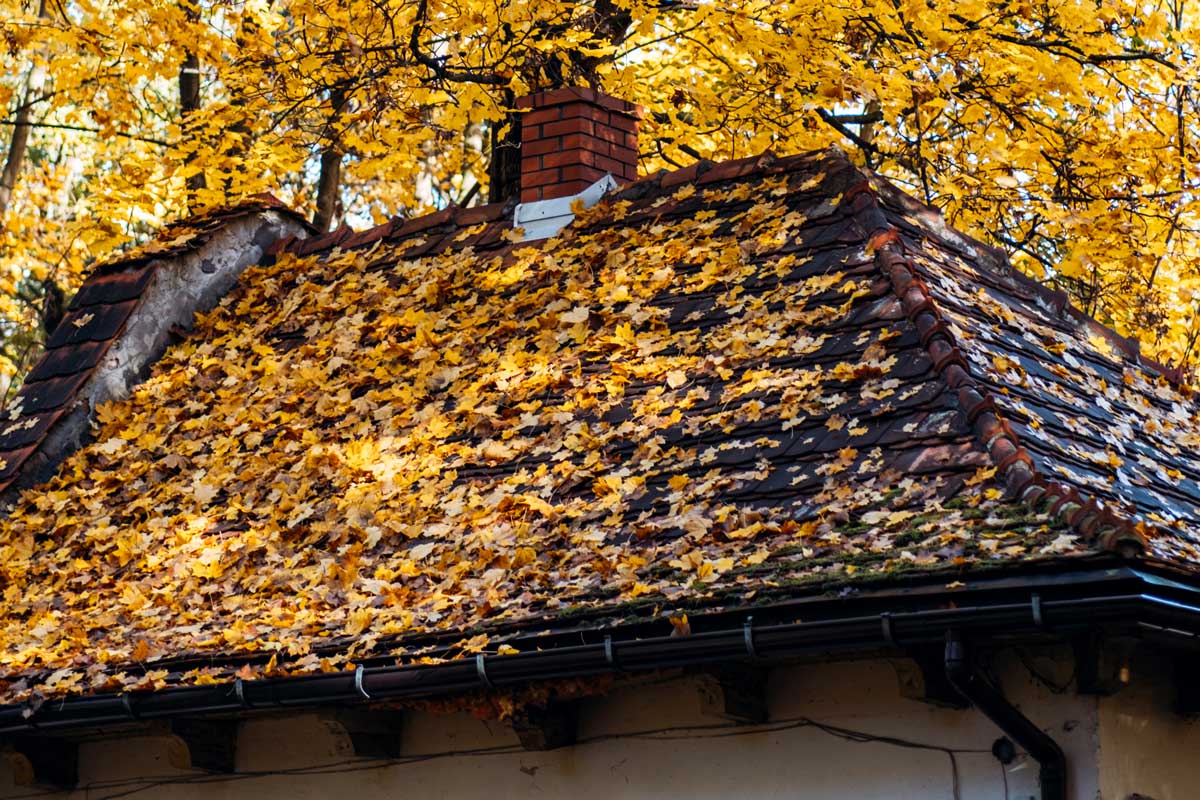Have you ever driven through a neighborhood and seen a home with black streaks running down the slope of its roof? Perhaps you have even seen this on your roof and wondered what it was. These dark streaks are a living organism known as roof algae—Gloeocapsa magma. They often appear beneath overhanging tree branches and on the north side of your roof because that side is typically moister, and the sun’s rays are less harsh. This gives the spores the perfect environment in which to multiply. What began as a few cells will turn into an unsightly mess. It only takes a single spore of roof algae landing on your roof to start the process, and within a few years, the roof algae will have taken over.
Some roofs are more vulnerable than others
Asphalt shingles contain limestone. Guess what roof algae are having for dinner? You may wonder why shingle companies produce their product with limestone if it will just become nourishment for roof algae. The limestone in asphalt shingles gives them a reflective quality, which lowers your energy bills. It also helps to make the shingles heavy and durable. Of course, shingles will lose some of that durability when the roof algae eat the durability-providing limestone. The dark color you see on your roof is a pigment caused by the built-up roof algae. Once this pigment covers the limestone, your shingles will no longer reflect sunlight. Instead, they will absorb the sun’s rays, heating the house and raising the cost of cooling your home.
What harm is done by roof algae?
- Increase your home utility bills
- Weaken your shingles, shortening their lifespan
- Ruin curb appeal. These ugly black streaks can scare buyers off, increasing the time your home stays on the market. It can also lower the price for which your home sells.
- Lower your home’s value. A buyer will most certainly want the roof replaced or at least have the cost of a future replacement reflected in the selling price of the home.
- They spread to other structures. Spores can easily travel from your roof to others in your neighborhood.
- It can harm your family’s health. If actual mold forms on your roof, you will have a health hazard.
Other organisms will join the party
Roof algae are only the beginning of the problems that your roof will see. The algae will work with fungi to form lichen.
Lichen attaches itself to the roof with tiny roots making it difficult (if not impossible) to remove. Eventually, lichen will remove the top layer of your shingles.
Moss is another organism that will cause irreparable damage to your shingles. It will anchor itself to your roof, capturing particles of soil. Bird droppings containing seeds will land on the moss and eventually sprout grass from the shingles.
Cleaning algae from your roof
You can clean the algae from your roof, but some problems arise while attempting to do this.
Many people try to use a pressure washer to remove the roof algae.
Never use a pressure washer on asphalt shingles. They don’t work very well and will damage your shingles.
An application of bleach and water will kill the algae; however, bleach runoff is a potent pollutant, which will kill other plants. It can also do a lot of damage to soils and aquatic ecosystems.
It is dangerous trying to clean your 40’ roof. It isn’t worth falling from that height.
The best way to deal with roof algae
Call a roofing contractor, such as All Craftsmen Exteriors. They have the experience needed to know the extent of the damage as well as the best way to solve the problem. If only a small part of your roof has incurred damage, you may be able to have your roof repaired. They will also know if underlying damage has also occurred, necessitating a roof replacement. With accurate knowledge from the professionals at All Craftsmen Exteriors, you can decide how to move forward. Do you have something growing on your roof? Contact us today!




